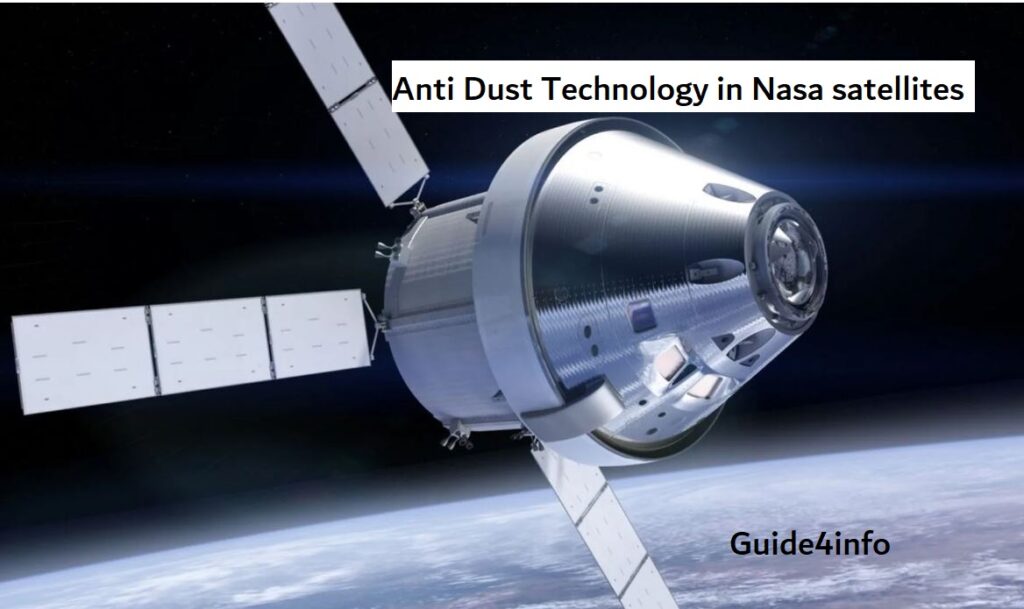For NASA spacecraft and space stations, dust creates a number of difficulties and is a major problem for space exploration. There are many Anti Dust Technology used in the Nasa Satellites.
The high dust levels in the satellites in Earth’s orbit can result in a number of challenges. This including as decreased solar power generation, difficulty with temperature control, and damage to delicate electronics.
Because of this, NASA has created a number of anti-dust technologies to protect its satellites and guarantee their continuous functioning in the hostile atmosphere of space.
Due to its extreme abrasiveness and potential to seriously harm delicate equipment, dust presents one of the main obstacles when handling it in space.
Dust, for instance, can cause scratches on the solar panels’ surfaces, which lowers their efficiency and reduces their ability to produce power.
Similarly, dust can gather on delicate instrument surfaces, obstructing sensors and causing malfunctions.
NASA has invented a number of methods to stop dust from building up on delicate surfaces.
Using electrostatic coatings, which repel dust particles. And stop them from sticking to surfaces, is one of the most often utilized methods.
By producing a static charge on the satellite’s surface, electrostatic coatings repel and stop dust particles from attaching. Numerous NASA spacecraft, such as the Lunar Atmosphere and Dust Environment Explorer and the Mars Reconnaissance Orbiter, have made use of this technology.
High-efficiency particulate air (HEPA) filters is another method NASA uses to reduce dust in the space.
These filters take out the dust and other tiny particles from the air. So they don’t get inside delicate equipment and break it. Numerous NASA spacecraft, such as the International Space Station and the Hubble Space Telescope, are equipped with HEPA filters.
Apart from these preemptive steps, NASA has also created technologies intended to remove dust from satellite surfaces. Ion beams are one such method that is used to remove dust particles from delicate equipment’s surfaces.
High-energy ions produce by ion beams and directed toward the satellite’s surface. When the dust particles and ions meet, the particles are lifted off the surface and carried away by other systems.
NASA uses brushes and wipers as an additional method to remove dust from the satellite surfaces.
In order to stop dust particles from damaging NASA equipment, these devices physically remove them from their surfaces. Wipers and brushes are frequently used in conjunction with other technologies. Such electrostatic coatings and ion beams, to offer a complete solution for dust control in space.
Howver, with the help of anti-dust technology, NASA’s benefited greatly to explore space and learn about the cosmos. NASA has been able to maintain the operation of its satellites. Scientific instruments in the hostile environment of space by creating methods to keep dust from building up on delicate equipment. And technology to wipe dust off surfaces.
Anti-dust technology will continue to be the important in the agency’s mission success. As it pushes the limits of human knowledge and discovers new horizons.
List of Anti Dust Technology used in Nasa Satellites
- Electrostatic Dust Repulsion: This technology is also famous as EDS (Electrody-namic Shield). EDS can remove dirt via an electric field generated on the top layer of the solar harvesting devices. Water is not required in the EDS technology. And it can operate with a fragment of the power produce by the solar harvesting devices.
- Vibration Mechanisms:
- Solar Panel Design:
- Electrostatic Dust Repulsion:
- Optical Window Treatments:
- Dust Seals and Covers:
- Self-Cleaning Coatings:
- Environmental Monitoring:
- Active Cleaning Mechanisms:
- Thermal Control Systems:
Must Read: Science & Technology Updates
Top 10 DevOps Courses help to get 20 Lakh package
For more updates you can join our FB page: Guide4info as well.
